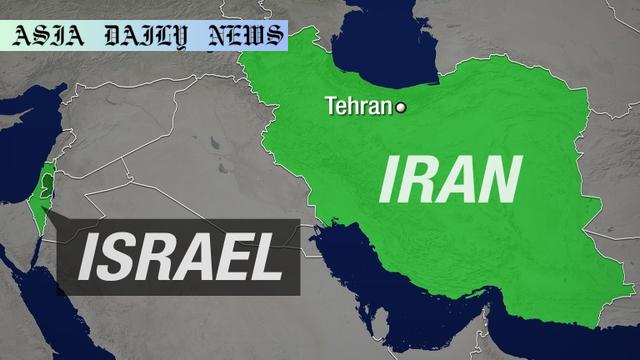Middle East Tensions continue as Israel and Iran resume heated discussions amidst looming nuclear threats and uncertain diplomacy.
Tensions remain high between Israel and Iran despite the ceasefire.
943 reported deaths in Iran following Israeli strikes.
US involvement through airstrikes sparks criticism from Iran.
Netanyahu hints at resuming strikes if nuclear threats arise.
Iran insists its nuclear development is peaceful and seeks reassurance.

An Overview of the Middle East Crisis
The Middle East has found itself at the epicenter of geopolitical turbulence yet again, following Israel’s military strikes on Iranian nuclear and military facilities. On this tense one-month anniversary, the situation remains ambiguous, with casualties mounting and discussions surrounding peace teetering on unstable grounds. A reported 943 individuals lost their lives in Iran due to Israeli attacks, while reciprocal actions from Iran claimed 28 lives in Israel. This vivid recounting of hostility serves as a grim reminder of unresolved tensions in the region.
Complex Narratives Surrounding Hostilities
In June, the world observed a chilling exchange of artillery and power as Israel and Iran locked horns over conflicting ambitions. According to reports, these hostilities lasted for 12 days, characterized by retaliatory strikes and unyielding responses. U.S. involvement, with targeted airstrikes on Iranian nuclear facilities, added further complexity to the skirmish. While the United States positioned its actions as pre-emptive and strategic, Iran viewed them as a betrayal of ongoing diplomatic engagement efforts.
Ceasefire: Fragile Pathway to Peace
The intervention of the United States, spearheaded by former President Donald Trump, led to the establishment of a tenuous ceasefire agreement. This halt in aggression, while necessary to curtail immediate violence, has failed to dispel underlying mistrust. Iranian Foreign Minister Abbas Araghchi lamented over the U.S.’s mixed actions of diplomacy and aggression, asserting that any future discussions would require a firm guarantee of non-aggression.
The Looming Threat of Resumed Strikes
Recent communications between Trump and Israeli Prime Minister Benjamin Netanyahu hinted at the possibility of resumed Israeli strikes should Iran take further steps towards nuclear weaponization. This revelation has significant implications for international diplomacy, raising concerns about the endurance of the ceasefire. Iran, on its part, continues to affirm that its nuclear ambitions are centered on peaceful purposes, yet there appears to be a deficit of trust between the involved parties.
The Need for Constructive Dialogues
Amid this quagmire, the role of constructive dialogues cannot be overstated. As tensions flare and the global community stands on edge, the question lingers: Can a sustainable resolution emerge from the interplay of diplomacy, military posturing, and conditional agreements? Moving forward, this pressing question will require the attention of not just the directly involved nations but also global stakeholders.
Conclusion
The Middle East remains a critical flashpoint in international relations, requiring incisive measures and a steadfast commitment to peace. The intricate web of military actions, diplomatic promises, and unrelenting mistrust underscores a need for a more holistic approach to diplomacy. Both Israel and Iran, alongside other vested nations such as the United States, must grapple with these uncertainties to pave the way toward long-term stability. Until then, the shadow of conflict continues to loom unpredictably over the Middle East.
Commentary
Reflecting on the Fragile Ceasefire
The recent conflict between Israel and Iran has laid bare the fragility of peace in a region so often beset by deep-seated animosities and divergent ambitions. The month-long aftermath reveals not just the human cost but also the limitations of international diplomacy when it comes to addressing core grievances and mistrust. The ceasefire, brokered by the United States, may act as a temporary bandage, but it does little to address the underlying causes of the conflict.
Diplomacy’s Struggle Against Hostility
The global community watched with mixed emotions as military hostilities escalated between the two nations. Iran’s repeated insistence on its peaceful nuclear development indicates a narrative that it hopes will resonate with global powers. Yet, actions often speak louder than words, and in the current climate, rhetoric alone cannot bridge the gap between Iran and its adversaries. Israeli rhetoric about preemptive defense and U.S. military engagement further muddle the waters, leading to a precarious balance that could easily tip into full-scale conflict.
Opportunities for Mediation and Resolution
What remains heartening amidst this turmoil is Iran’s willingness to remain open to dialogues under certain assurances. If true goodwill exists on all sides, this can be a window of opportunity to foster more meaningful negotiations. Still, such discussions require transparency and a commitment to avoid actions that would escalate tensions further. Guaranteeing Iran’s security while addressing Israel’s concerns over nuclear threats is, no doubt, a tightrope walk—but one worth considering seriously for long-term peace.
Conclusion
The case of Israel and Iran serves as an exemplary microcosm of global tensions where diplomacy, security concerns, and historical grievances converge. As the situation remains uncertain, the world stands at a crossroads: Will global leaders capitalize on the opportunities for peace, or will the specter of conflict linger indefinitely? Only time will tell, but the answers lie in proactive, inclusive, and empathetic diplomacy.


